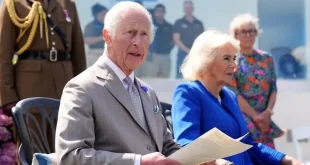Mack Truck, copper strikes show potential to spread GM walkout to Ford, Fiat Chrysler
15 October 2019
The strike by 48,000 General Motors workers, now into its second month, has reached a critical juncture. The strikers have demonstrated enormous fighting capacity and self-sacrifice, and their battle to improve the conditions of future generations has won popular support from workers and young people throughout the US and internationally.
But the strike remains in grave danger because the United Auto Workers union has deliberately isolated the GM workers and forced them to fight this battle alone. Defying the widespread support for an industrywide strike, the UAW has kept 110,000 workers at Ford and Fiat Chrysler on the job a month after the expiration of their contracts.
The reactionary character of the UAW’s one-at-a-time “strategy” was underscored by a Detroit Free Press article Monday making clear that Ford and Fiat Chrysler will not be bound by any agreement the UAW signs with GM, but will pursue their own demands, particularly on the slashing of health care costs.
But new sections of the working class have come into struggle alongside the GM workers, demonstrating the potential to break the isolation of the GM strike:
• After the UAW kept them on the job for weeks following the contract expiration, 3,500 Mack-Volvo truck manufacturing workers in Pennsylvania, Maryland and Florida walked off the job on Sunday in their first strike in 35 years. Like autoworkers, truck manufacturing workers are facing a global job- and cost-cutting campaign by transnational corporations seeking to dominate electric, autonomous and other emerging transportation technologies.
• More than 2,000 copper miners and smelter workers in Arizona and Texas, members of the United Steelworkers and other unions, walked out late Sunday and early Monday morning against Asarco, the world’s third largest copper producer, owned by the giant conglomerate Grupo Mexico. The workers rejected the company’s “last and final offer,” which included no wage increase for workers who have endured an eleven-year pay freeze, and whose pensions have been frozen and out-of-pocket health expenses have more than doubled.
• In Chicago, more than 20,000 teachers and support staff have voted to strike Thursday over stagnating wages, higher health care contributions and decades of budget cuts and school closures. The teachers are joined by 7,500 special education aides, custodians and other staff, along with 2,000 public park workers, who have also voted to strike.
• At midnight tonight, the labor agreements covering 11,000 commercial office cleaners in Washington, DC and another 3,000 employed in downtown Philadelphia will expire. If the cleaners, who make as little as $17 an hour in some of the most expensive US cities, strike tomorrow night, they will be joined by building engineers and other building service workers covered by the same Service Employees International Union (SEIU) contract.
• 2,000 Frontier Communications workers could strike across the state of Connecticut on Saturday against the contracting-out of jobs and attacks on health care benefits. Workers voted overwhelming to walk out, but the Communications Workers of America (CWA) has repeatedly delayed strike action.
• In a sign of struggles to come, a group of workers for the grocery delivery app Instacart are organizing a nationwide strike November 3-5 to demand that the company restore its old tipping policies. Anger is also growing against Amazon, which abruptly canceled its contracts with three major delivery firms, putting more than 2,000 people out of work.
The outbreak of strikes in the US, which began with the wildcat strikes by West Virginia teachers in February 2018, is part of a global resurgence of the class struggle. More than 70,000 teachers in Croatia are currently on strike, pilots and cabin crew at Alitalia and Lufthansa are engaged in strikes and protests, and more than 110,000 Royal Mail workers in the UK are balloting to take strike action during the Christmas holidays.
On Monday, Morgan Stanley analyst Adam Jonas said that Wall Street remains “comfortable” with a prolonged GM strike as long as it achieves its long-term strategic goals. “Investors we have engaged with are comfortable with extended strike duration and potential upfront multibillion-dollar financial impact as long as GM preserves long-term cost and strategic flexibility,” Jonas wrote in a note to investors.
In other words, this is class war.
Since the Obama administration’s 2009 bankruptcy restructuring of GM, the automaker, with the full collaboration of the UAW, has lowered its hourly labor costs from $16 billion in 2005 to about $5 billion today. But that is not enough.
Wall Street wants to reduce all workers to the status of at-will employees like those at Instacart, Amazon and other “gig economy” firms. For the financial elite, the workforce of the future will be nothing more than industrial slaves whose every move is electronically monitored and whose pay and employment status depend on the vagaries of the stock market.
The stock market bubble and the huge fortunes amassed by the financial elite are based on a decades-long reduction in labor’s share of the economy enforced by the UAW and the other unions. But more than a decade after the global financial crash of 2008, which was followed by an unprecedented handover of society’s resources to the super-rich, workers are seeking to break free of the shackles of the union bureaucracy and challenge the grotesquely unequal distribution of wealth.
“Many people thought labor risk had been kind of subdued by the downturn,” Michael Ward of investment bank Seaport Global told CNBC’s “Closing Bell,” but “now it is back on the table that labor can be a real risk as you go forward.”
Every class struggle, as Marx said, is a political struggle, requiring the greatest unity of workers across all industries and national borders to fight the capitalist system and the political order that defends it. As new battalions of workers enter into struggle, they will increasingly realize that achieving their most elemental aims will be possible only through the forging of a powerful revolutionary movement to fight for political power, a radical redistribution of wealth from the top to the bottom, and the reorganization of economic life based on human need, not private profit.
This is what lies behind Trump’s fascistic rants against immigrant workers and denunciations of socialism. He does not fear the Democrats—who are just as determined to defend the wealth and power of the corporate and financial elite as the Republicans—he fears the growing radicalization of workers and youth and their increasing hostility to capitalism and interest in socialism.
There are two roads facing GM workers. If the strike is left in the hands of the UAW, it will be isolated and defeated. The biggest concern of the UAW is keeping the company-union joint training centers open as a source of bribes and payoffs to union officials for imposing management’s dictates. That goes hand in hand with negotiating plea-bargain deals in the expanding corruption probe to minimize their prison sentences and fines.
Workers must organize now to take the road to victory. There is no time to lose. Begin forming rank-and-file factory and strike committees to coordinate information and action among all autoworkers, spread the strike to Ford and Fiat Chrysler and throughout the auto and auto parts industry, and unite with every other section of the working class, including teachers, truck, telecom and logistics workers.
In opposition to the anti-Mexican poison being peddled by the UAW, autoworkers must defend the courageous GM workers in Silao, Mexico, who were fired for supporting the US strike, and mount a common struggle by Canadian, Mexican and US workers to defend the right to good-paying and secure jobs for all workers.
The GM strike can and must be transformed into a powerful political movement of the working class armed with a socialist program, including the transformation of the global auto industry and the Wall Street banks into public enterprises under the collective ownership and democratic control of the working class.
Jerry White
We need your support
The WSWS recently published its 75,000th article. Become a monthly donor today and keep up this vital work. It only takes a minute. Thank you.
Source link



